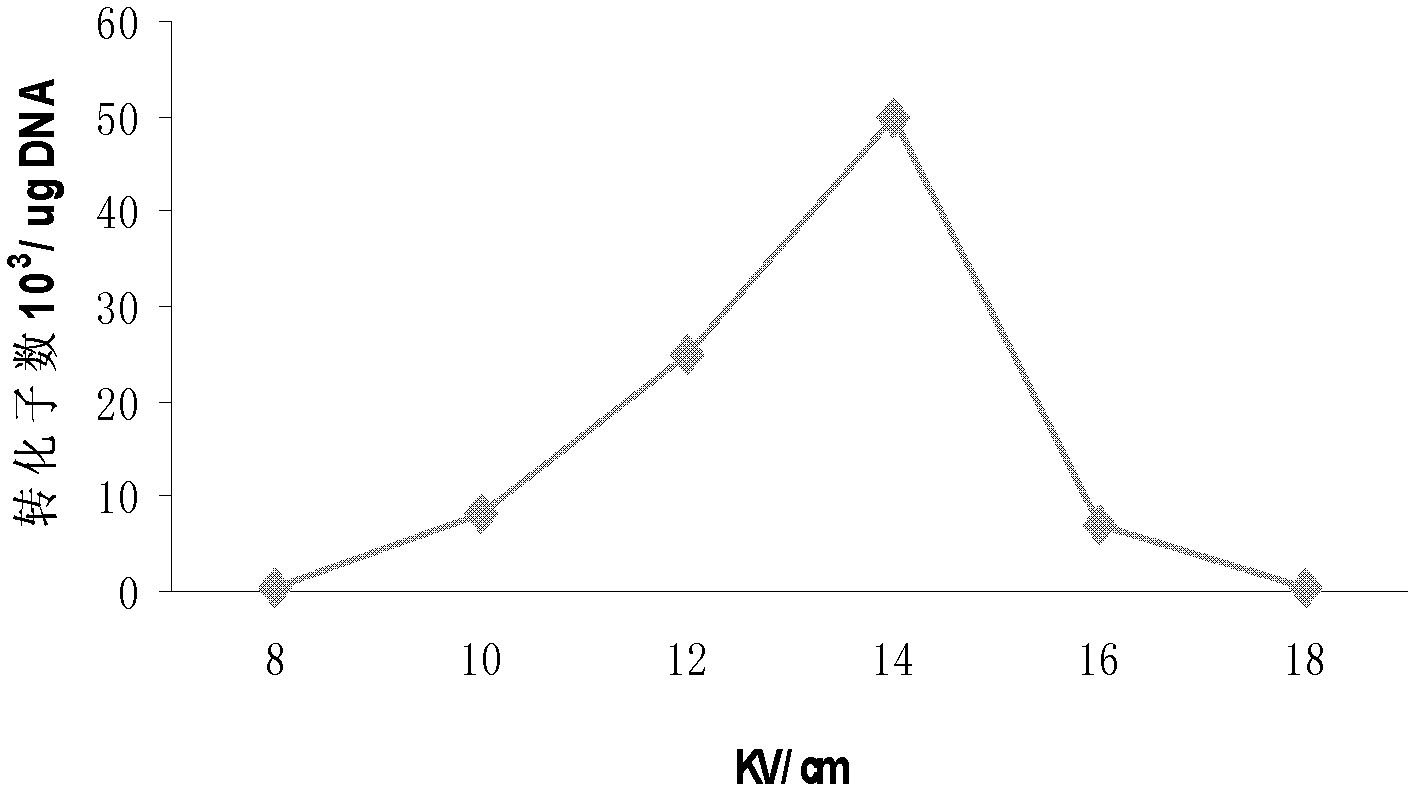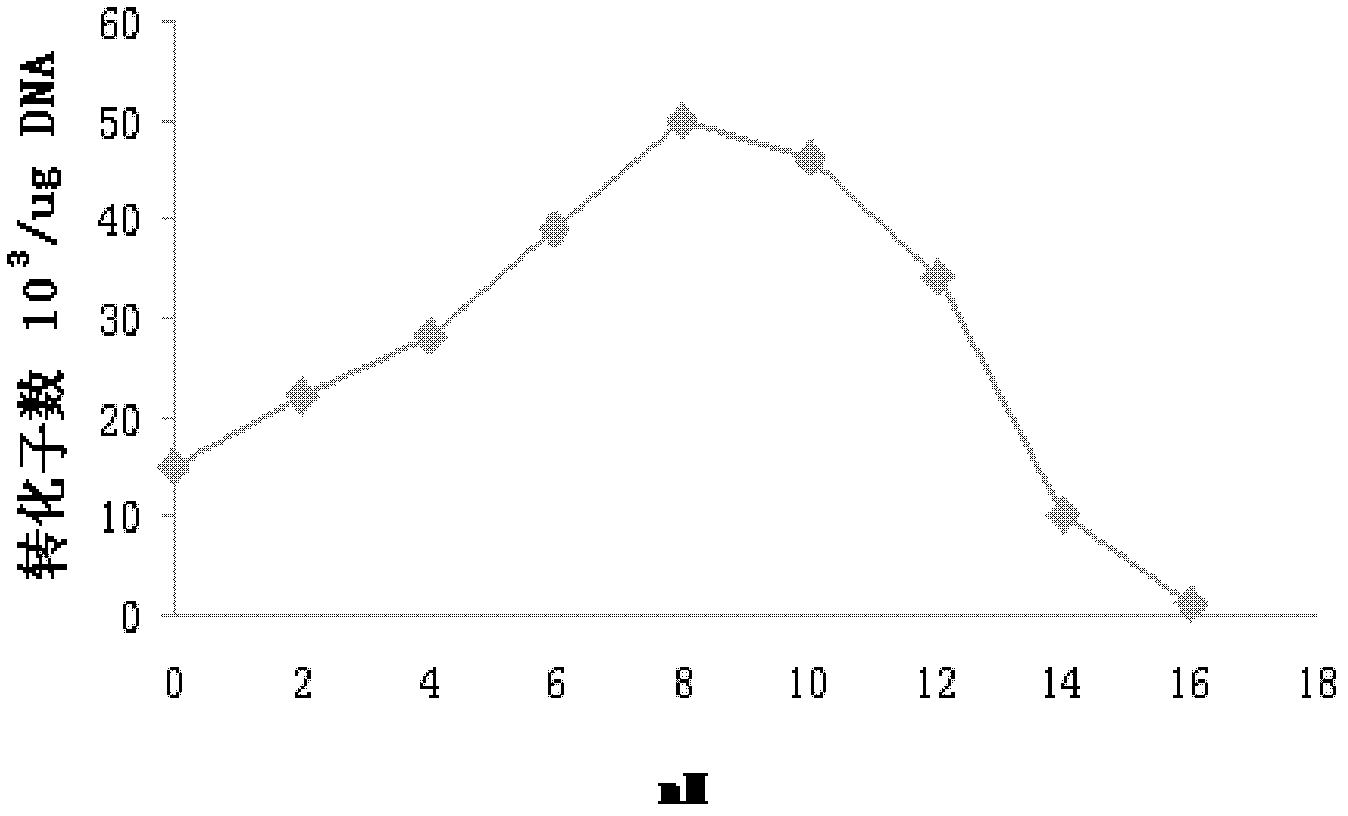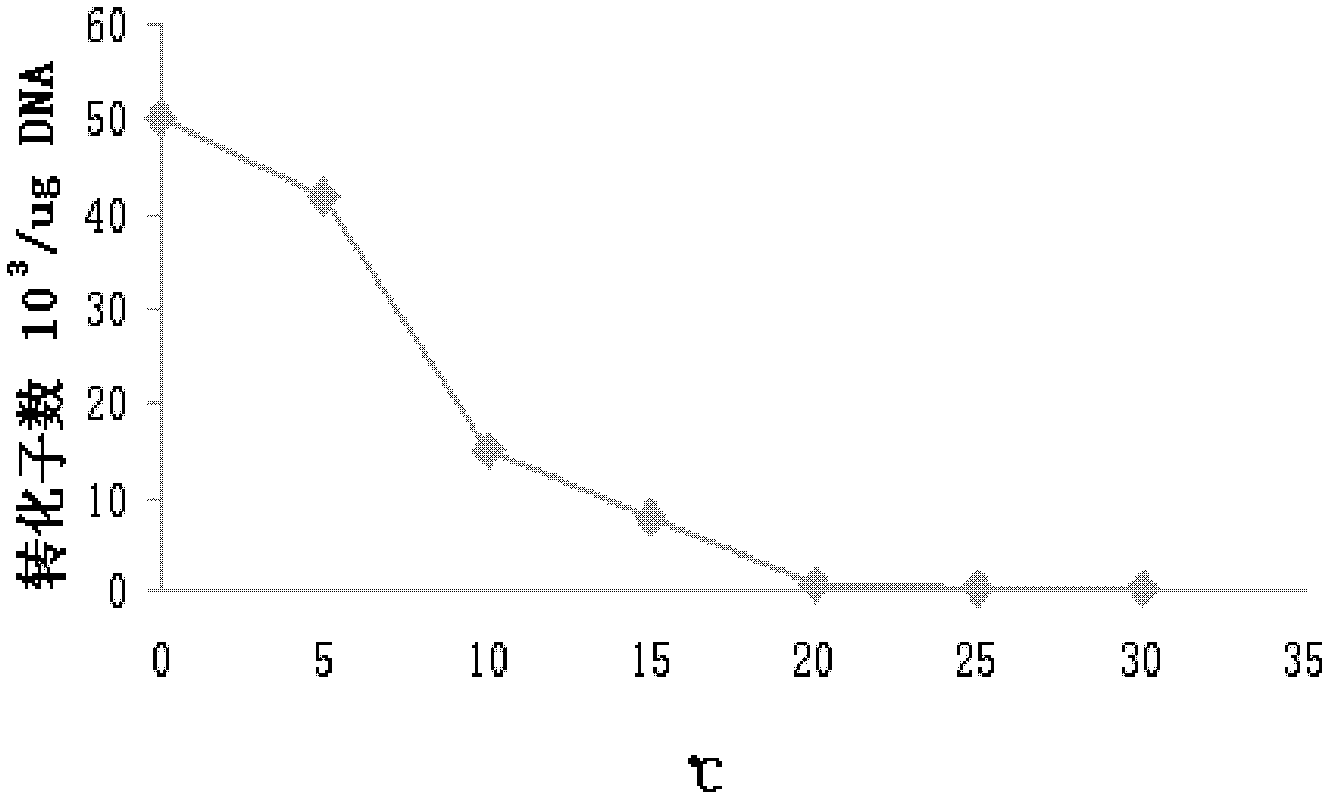Electrotransformation method of Cytophaga hutchinsonii
A technology of Hastelloy fiber phagocytosis and electrotransformation, applied in the biological field, can solve the problems of low transformation efficiency, unstable repeatability, complicated operation, etc., and achieve the effect of improving transformation efficiency and reducing lethality
- Summary
- Abstract
- Description
- Claims
- Application Information
AI Technical Summary
Problems solved by technology
Method used
Image
Examples
Embodiment 1
[0033] A method for electrotransformation of Cellophagus Hartneri, the steps are as follows:
[0034] (1) Extract plasmid pEP4351 (constructed by A J COOPER et al., see J. Bacteriol. 1997, 179(20): 6221) from E.coli S17-1λpir BW19851 strain with Takara Plasmid Purification Kit, and measure the plasmid concentration by spectrophotometer It is 40μg / ml recombinant plasmid solution;
[0035] (2) Preparation containing MgCl 2 and glycerol in water, MgCl 2 The final concentration of the solution was 8 mM, and the volume of glycerol accounted for 10% of the total volume of the solution, and the above aqueous solution was placed in an ice bath to prepare an electric shock buffer;
[0036] (3) Cultivate and activate the cells of cellophagocytosis in liquid medium TY2 at 170 rpm and 30 °C for 40 h, then transfer to liquid medium TY2 liquid medium, cultivate at 170 rpm, 30 ° C for 40 h, and then, at 7000 rpm , 5min, 4°C centrifugation to collect cells; wash and resuspend cells with pr...
Embodiment 2
[0046] Experiment on the effect of different electric field strengths on the electrotransformation efficiency of Cellophaga harvetii
[0047]In the experiment, the strain of Cellophagus harveta ATCC 33406 was used, and the plasmid pEP4351 was extracted from E.coli S17-1λpir BW19851 strain with Takara Plasmid Purification Kit, and the concentration of the plasmid was accurately determined by spectrophotometer to be 40 μg / ml. The shock buffer was formulated as follows: 10% glycerol, 8 mM MgCl 2 , chill on ice before use.
[0048] The logarithmic phase of Cellophaga harveii ATCC 33406 was inoculated into liquid medium TY2, cultured at 170 rpm, shaking at 30 °C for 40 h, 7000 rpm, 5 min, and centrifuged at 4 °C to collect cells; wash and resuspend cells with pre-cooled sterile water, Cell pellets were collected by centrifugation at 7000 rpm, 5 min, 4 °C, and the supernatant was discarded to remove impurities in the medium; the cells were washed and resuspended twice with pre-cool...
Embodiment 3
[0052] Different MgCl 2 Experiment on the effect of concentration on electrotransformation efficiency of Cellophaga harveta
[0053] In the experiment, the strain of Cellophagus harveta ATCC 33406 was used, and the plasmid pEP4351 was extracted from E.coli S17-1λpir BW19851 strain with Takara Plasmid Purification Kit, and the concentration of the plasmid was accurately determined by spectrophotometer to be 40 μg / ml.
[0054] The shock buffer is composed of different concentrations of MgCl 2 10% glycerol solution for the purpose of determining the optimal MgCl 2 concentration, shock buffer was stored frozen on ice.
[0055] The logarithmic phase of Cellophaga harveii ATCC 33406 was inoculated into liquid medium TY2, cultured at 170 rpm, shaking at 30 °C for 40 h, 7000 rpm, 5 min, and centrifuged at 4 °C to collect cells; wash and resuspend cells with pre-cooled sterile water, Cell pellets were collected by centrifugation at 7000 rpm, 5 min, 4 °C, and the supernatant was disc...
PUM
| Property | Measurement | Unit |
|---|---|---|
| Conversion efficiency | aaaaa | aaaaa |
Abstract
Description
Claims
Application Information
 Login to View More
Login to View More - R&D Engineer
- R&D Manager
- IP Professional
- Industry Leading Data Capabilities
- Powerful AI technology
- Patent DNA Extraction
Browse by: Latest US Patents, China's latest patents, Technical Efficacy Thesaurus, Application Domain, Technology Topic, Popular Technical Reports.
© 2024 PatSnap. All rights reserved.Legal|Privacy policy|Modern Slavery Act Transparency Statement|Sitemap|About US| Contact US: help@patsnap.com










